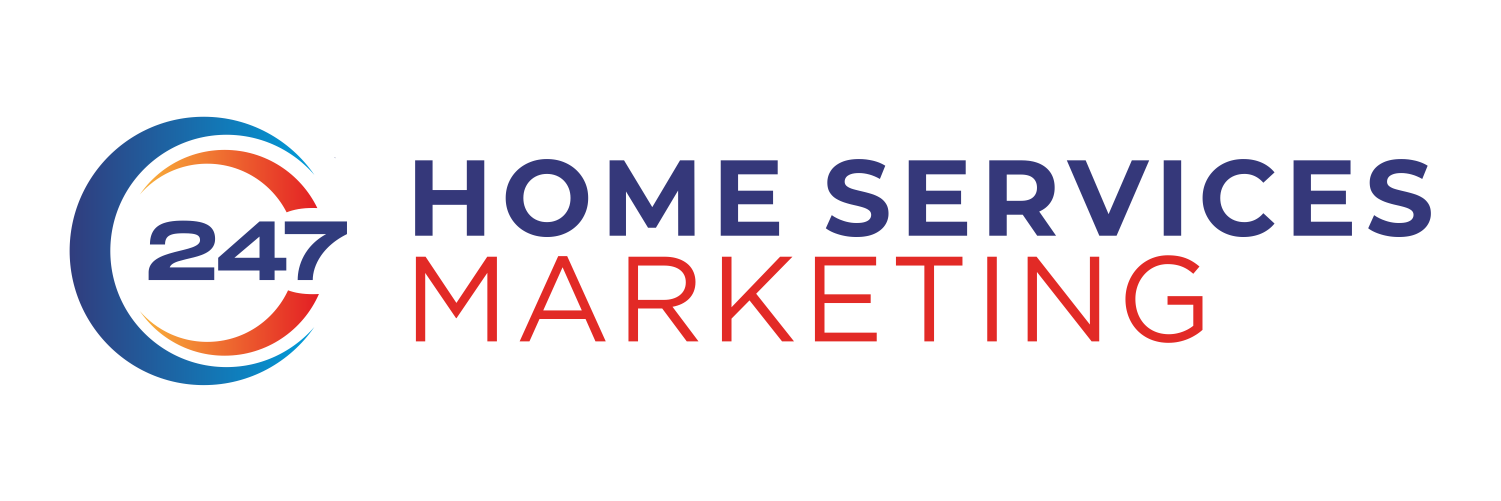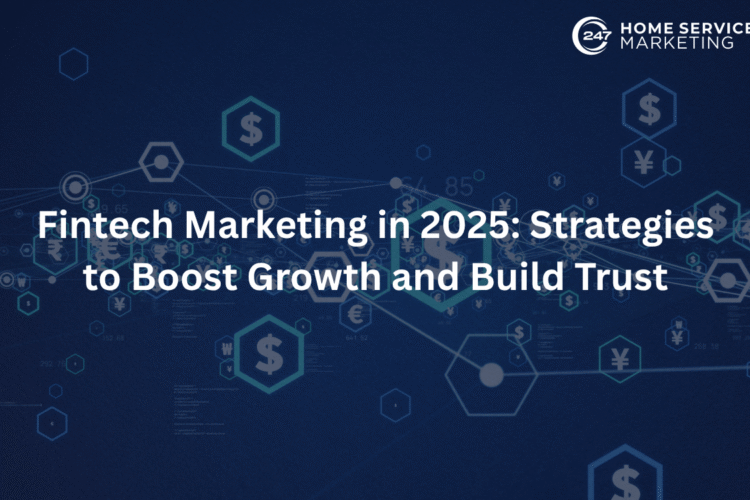
Running a home services business in today’s fast-paced economy goes far beyond simply excelling at your core trade, whether it’s plumbing, HVAC installation and repair, professional landscaping, thorough cleaning services, or reliable electrical work. The truly successful companies are those that masterfully blend their high-quality craftsmanship with innovative and effective marketing strategies. According to recent data from Bright Local, a staggering 97% of consumers now turn to online searches to discover local service providers, making your digital footprint the ultimate deciding factor between securing a steady stream of loyal customers and fading into the background amid fierce competition from larger firms or aggressive startups.
However, effective digital marketing for home services isn’t merely about slapping your business name across the web—it’s a comprehensive approach that involves cultivating a robust online presence, fostering genuine trust among homeowners in your community, and strategically positioning your company as the undisputed expert for all their home-related needs. Whether you’re a seasoned contractor with years of experience under your belt or a budding entrepreneur just launching your venture, implementing the right marketing strategies can transform your operations by attracting a consistent influx of new clients, nurturing enduring relationships that lead to repeat business, and driving sustainable revenue growth year after year. In an industry where word-of-mouth and online reviews can make or break your reputation overnight, these tactics are essential for long-term success.
In this comprehensive guide, we’ll delve deeply into eight proven marketing strategies specifically designed for home service marketing, ranging from foundational Local SEO optimization and targeted paid advertising campaigns to proactive reputation management and engaging video marketing initiatives. To make it even more actionable, we’ll include practical implementation steps, real-world examples, and insider tips throughout. Additionally, you’ll discover a detailed infographic illustrating the marketing funnel, a section on the latest 2025 trends shaping the industry, frequently asked questions with in-depth answers, and a curated list of valuable resources to empower you to refine and elevate your marketing efforts. By the end, you’ll have a clear roadmap to not just survive but dominate in the competitive home services landscape.
1. Invest in Local SEO to Dominate Your Market
Local search optimization serves as the absolute backbone of marketing for home services businesses, acting like a digital beacon that guides potential customers straight to your doorstep. Imagine a homeowner frantically typing “plumber near me” into their phone during a midnight leak or searching for the “best HVAC service in [your city]” as summer heatwaves approach—your ultimate objective is to ensure your business appears prominently at the top of those results, outshining competitors. With Bright Local reporting that 46% of all Google searches now carry a local intent and “near me” queries surging by an astonishing 900% over the past two years, Local SEO has evolved from a nice-to-have feature into an indispensable necessity for survival and growth in this hyper-local industry.
Why it matters:
· Direct Access to Urgent Needs: It positions your business precisely where homeowners are seeking immediate solutions, such as emergency repairs or routine maintenance, turning searches into same-day appointments.
· Prime Placement in Google’s Local Map Pack: This coveted section—the top three business listings that appear in a map format on search results—can drive up to 70% of clicks for local queries, giving you an edge over non-optimized rivals.
· High Conversion Potential: Research shows that 78% of local searchers end up contacting or visiting a business within just 24 hours, meaning these leads are warm, qualified, and primed for conversion without extensive nurturing.
How to implement it:
· Optimize Your Google Business Profile (GBP): Begin by verifying your profile through Google’s process, then meticulously update it with precise details like operating hours (including after-hours emergency availability), comprehensive service areas covering multiple zip codes, high-resolution photos of your team and completed projects, and actively solicit customer reviews to boost your star rating.
· Create Dedicated Location Pages: Develop customized landing pages on your website for every neighborhood, suburb, or city within your operational radius; each page should include unique content about local challenges (e.g., “Handling Houston’s Humid Climate with Top-Notch AC Services”) to improve relevance and engagement.
· Incorporate Schema Markup: Implement structured data code on your site using tools like Google’s Structured Data Markup Helper; this technical enhancement helps search engines better understand and categorize your business type, specific services offered (e.g., “emergency plumbing repair”), and geographic service areas, potentially earning rich snippets in search results.
· Target Geo-Specific Keywords: Focus on long-tail phrases that mirror real customer queries, such as “emergency electrician in Dallas for faulty wiring” or “affordable landscaper in Austin specializing in drought-resistant designs,” and integrate them naturally into page titles, meta descriptions, headers, and body content.
· Maintain NAP Consistency: Your business’s Name, Address, and Phone number must be uniformly listed across all online directories, social profiles, and your website to avoid confusing search algorithms and maintain trust signals that influence rankings.
Pro Tip: Go beyond basic listings by uploading authentic, high-quality team photos showing your technicians in uniforms and hard hats, short videos of your crew tackling real jobs on-site, and detailed project galleries with before-and-after shots. According to Google, businesses that include photos on their profiles experience a 42% increase in requests for driving directions and a 35% uplift in website clicks, directly translating to more foot traffic and inquiries.
2. Leverage Google Local Services Ads (GLSA)
Google Local Services Ads represent a revolutionary shift in how home service businesses can capture leads, appearing prominently at the very top of search results—above even traditional Google Ads—and distinguished by the iconic green checkmark of the Google Guaranteed badge. This certification not only verifies that your business is fully licensed and insured but also promises customer protection up to $2,000 for any verified issues, instantly alleviating common homeowner concerns about hiring unreliable contractors.
Why it works:
· Pay-Per-Lead Model: Unlike click-based ads where you might pay for uninterested browsers, GLSA charges you solely for qualified leads that result in actual customer interactions, such as phone calls or messages, ensuring every dollar spent delivers tangible value.
· Instant Credibility Boost: The Google Guarantee badge acts as a powerful trust signal, reassuring potential clients that they’ve found a vetted professional, which can significantly reduce hesitation and increase response rates.
· Top-of-Funnel Visibility: Homeowners encounter your ad first when performing service-specific searches, capturing high-intent traffic before competitors even enter the conversation.
Action steps:
· Register and Verify Thoroughly: Sign up through Google’s platform, submitting all required documentation like state licenses, proof of insurance, background checks, and bonding information; the verification process, which includes phone confirmation and sometimes in-person audits, typically takes 1-2 weeks but is worth the investment.
· Highlight Key Differentiators: In your ad profile, emphasize unique value propositions such as round-the-clock emergency response, decades of combined team experience, guaranteed same-day service for urgent jobs, or eco-friendly practices to stand out in a crowded market.
· Monitor and Track Performance: Utilize the dedicated GLSA dashboard to log incoming calls, message threads, and booking requests; integrate it with your CRM for seamless follow-up and attribute revenue back to specific leads.
· Refine Targeting and Bidding: Experiment with expanding or contracting your service areas based on demand patterns (e.g., focus on high-growth suburbs), and adjust bid amounts strategically—higher bids for competitive keywords like “emergency plumber” can secure more premium placements without overspending.
Case in Point: Consider a Florida-based cleaning company that integrated GLSA into their strategy and witnessed a remarkable 65% surge in weekly qualified leads within the first three months, primarily from residential clients seeking deep-clean services post-hurricane season. For specialized trades like electricians handling complex wiring upgrades, plumbers dealing with burst pipes, or HVAC technicians servicing energy-efficient systems, GLSA consistently delivers one of the quickest returns on investment in the digital marketing toolkit, often paying for itself through just a handful of jobs.
3. Content Marketing to Build Authority
In an era where homeowners are bombarded with options, content marketing emerges as a strategic powerhouse that transcends mere promotion—it’s about delivering genuine value, education, and reassurance to position your home services business as the authoritative voice in your locale. By producing and sharing insightful, problem-solving content on a regular basis, you not only attract organic traffic but also cultivate a loyal audience that views your company as a reliable advisor rather than just a service provider.
Content ideas that work:
· Informative Blog Posts: Craft in-depth articles like “5 Subtle Signs Your AC Unit Needs Professional Repair Before the Summer Heat Hits,” complete with diagnostic checklists, common myths debunked, and calls-to-action for free consultations.
· Engaging Infographics: Design visually appealing resources such as a “Seasonal Lawn Care Checklist for Busy Homeowners,” featuring step-by-step timelines, tool recommendations, and quick tips tailored to regional climates.
· Compelling Videos: Produce tutorial-style clips like “How to Spot and Prevent Water Damage Before It Escalates into Costly Repairs,” using real footage from past jobs to demonstrate inspection techniques and safety precautions.
· Comprehensive Ebooks or Guides: Offer downloadable assets like “The Ultimate Home Maintenance Checklist for New and Seasoned Homeowners,” covering everything from gutter cleaning schedules to electrical safety audits, gated behind an email signup for lead capture.
Why it matters:
· Lead Generation Powerhouse: HubSpot data reveals that businesses maintaining an active blog generate 67% more leads each month compared to those that don’t, as content draws in curious searchers and converts them over time.
· SEO Synergy: High-quality content naturally incorporates relevant long-tail keywords (e.g., “how to winterize your HVAC system in Chicago”), signaling to search engines that your site is a valuable resource and improving overall rankings.
· Credibility and Nurturing: It humanizes your brand by addressing pain points upfront, building emotional connections that encourage homeowners to choose you when they’re finally ready to schedule a service, rather than opting for the lowest bidder.
Pro Tip: Diversify your content mix by incorporating before-and-after project photos with detailed captions explaining the challenges overcome, heartfelt customer success stories that highlight transformations, and bite-sized “DIY tips” videos that empower viewers while subtly showcasing your expertise. This authentic, educational approach not only keeps visitors returning to your website for more insights but also amplifies brand recall through shares and referrals, turning one-time readers into lifelong advocates.
4. Build & Manage Your Reputation
Your business’s reputation stands as the cornerstone of all marketing efforts in the home services sector, where personal recommendations and online feedback can sway decisions more than any ad campaign. Review Trackers’ studies indicate that a whopping 94% of consumers steer clear of companies marred by negative reviews, underscoring the high stakes involved. Conversely, businesses boasting robust, positive review profiles not only climb higher in search engine rankings but also accelerate sales cycles, as trust translates directly into quicker bookings and higher close rates.
How to build a stellar reputation:
· Proactively Solicit Reviews: After completing every job, automate follow-up communications via SMS or email templates that thank the customer and include a direct link to your preferred review platforms; personalize requests by referencing specific aspects of the service, like “We hope you enjoyed the fresh look of your newly landscaped yard!”
· Respond Thoughtfully and Swiftly: Acknowledge positive reviews with genuine gratitude, such as “Thank you for trusting our team with your HVAC upgrade—your feedback means the world!” For negatives, address them publicly with empathy, outlining resolution steps (e.g., “We’re sorry the plumbing repair didn’t meet expectations; we’ve scheduled a complimentary follow-up”), which demonstrates accountability and often turns detractors into promoters.
· Prominently Showcase Testimonials: Integrate glowing reviews into your website’s homepage, service pages, and email signatures; create a dedicated “What Our Customers Say” section with video testimonials for added authenticity.
· Foster Referrals Organically: Incentivize word-of-mouth by offering discounts on future services for successful referrals, and make it effortless with shareable digital cards or referral links sent post-job.
Tools to use:
· Google Reviews: Essential for enhancing Local SEO Service visibility and appearing in the Map Pack, with easy integration for review widgets on your site.
· Yelp: Builds broader credibility, especially for urban markets, by tapping into a vast user base that influences 30% of local searches.
· Angi (formerly Angie’s List) and Nextdoor: These platforms excel at forging community ties, with Angi focusing on verified pros and Nextdoor leveraging neighborhood networks for hyperlocal endorsements.
Pro Tip: Streamline the review process by incorporating a scannable “Review Us” QR code on invoices, detailed service reports, or even your business cards and vans. This frictionless method can dramatically increase response rates, as customers can submit feedback instantly from their phones, leading to a richer profile of 4- and 5-star ratings that bolsters your online authority.
5. Stay Top-of-Mind with Email Marketing
Despite the rise of social media and instant messaging, email marketing endures as one of the most efficient and high-ROI channels for home services businesses, allowing you to maintain a direct, personal line of communication with past and potential customers. Litmus reports an impressive average return of $36 for every $1 invested, making it an ideal tool for re-engaging lapsed clients, promoting seasonal services, and transforming one-off jobs into recurring revenue streams without the escalating costs of constant ad buys.
Why it works:
· Sustained Visibility: Emails keep your brand front and center in customers’ inboxes, reminding them of your reliability during off-peak times when they might not actively search but could face unexpected needs.
· Loyalty and Retention Focus: It strengthens customer bonds by delivering personalized value, encouraging repeat visits that account for up to 80% of long-term revenue in service-based industries.
· Upsell Opportunities: Seamlessly introduce complementary services, such as suggesting water heater inspections to plumbing clients or electrical safety checks to HVAC customers, increasing average job value.
What to send:
· Seasonal Reminders: Timely alerts like “Don’t Wait—Schedule Your Winter Furnace Tune-Up Now to Avoid Cold Surprises,” including checklists and booking links to capitalize on predictable demand cycles.
· Exclusive Offers: Personalized promotions such as “As a Valued Client, Save 10% on Your Next Lawn Care Package This Spring,” creating a sense of VIP treatment.
· Practical DIY Tips: Helpful content like “Safe Ways to Unclog a Sink Without Harsh Chemicals,” which positions you as an expert while driving traffic back to your site for professional alternatives.
· Inspirational Customer Stories: Feature narratives of successful projects, such as “How We Transformed a Dated Kitchen into a Modern Oasis,” with photos and quotes to evoke trust and aspiration.
Pro Tip: Maximize impact by segmenting your email list based on service history, location, and past interactions—for instance, targeting recent plumbing customers with electrical service offers or seasonal HVAC reminders for northern clients. This tailored approach boosts open rates by up to 20% and click-throughs, ensuring your messages resonate and convert more effectively than generic blasts.
6. Run Targeted PPC Campaigns
PPC (Pay-Per-Click) advertising empowers home services businesses to intercept customers at the peak of their intent, displaying your ads precisely when they’re searching for solutions like “leaky faucet repair” or “roof inspection near me.” As a results-driven tactic, PPC provides immediate visibility and scalability, making it particularly suited for businesses needing quick lead influxes during peak seasons or after launching new service lines.
Best practices:
· Precision Keyword Targeting: Prioritize high-urgency terms such as “24/7 plumber near me for burst pipes” or “same-day AC repair in hot weather,” using negative keywords (e.g., -DIY) to filter out low-value traffic.
· Enhance Ads with Extensions: Incorporate call extensions for one-tap dialing, location extensions to show your proximity, and sitelinks to highlight services like “Emergency Response” or “Free Quotes,” which can improve click-through rates by 15%.
· Optimize Landing Pages: Direct traffic to specialized pages (e.g., a plumber’s emergency repair page with a prominent “Call Now” button and testimonials) rather than generic homepages, ensuring a seamless user journey that boosts conversions.
· Rigorous Tracking and Analysis: Employ Google Ads and Google Analytics to monitor metrics like cost-per-lead, conversion rates, and customer lifetime value; A/B test ad copy and bids weekly to refine performance.
Recent Stat: The Google Economic Impact Report highlights that businesses typically earn $2 in revenue for every $1 invested in Google Ads, with even higher returns possible through meticulous targeting in local markets. For home services, PPC‘s ability to focus on high-buying-intent searches ensures you’re investing in leads that are far more likely to materialize into paying jobs, often yielding results in hours rather than weeks.
7. Use Social Media Advertising for Brand Awareness
Social media advertising has matured into a sophisticated engine for home services marketing, far surpassing superficial engagement metrics to deliver measurable awareness, traffic, and conversions. Platforms like Facebook, Instagram, and TikTok offer unparalleled access to hyper-targeted local audiences, enabling you to showcase your work in visually captivating ways that resonate with homeowners scrolling during downtime.
Examples of effective ads:
· Dynamic Before-and-After Videos: A 15-second clip of a roofing repair transforming a storm-damaged home, overlaid with text like “From Chaos to Secure in One Day.”
· Interactive Carousel Ads: Swipeable formats displaying a suite of services—plumbing, electrical, landscaping—with each slide featuring a unique project photo and benefit (e.g., “Energy-Saving HVAC Upgrades”).
· Authentic Testimonial Videos: Short clips of satisfied customers sharing their experiences, such as “Our electrician fixed our outlets safely and on time—highly recommend!”
Targeting tips:
· Geographic Precision: Use zip code or radius targeting to zero in on your service area, excluding irrelevant regions to optimize ad spend.
· Retargeting for Warm Leads: Re-engage website visitors who abandoned a quote form with customized ads like “Still Need That Plumbing Fix? We’re Here to Help.”
· Seasonal and Behavioral Campaigns: Time promotions around events, such as “Spring HVAC Tune-Up Special: Beat the Heat Early,” targeting users interested in home improvement or recent movers.
Pro Tip: Infuse your ads with compelling storytelling— for example, a heartfelt Reel depicting your team resolving a family’s heating crisis during a brutal winter storm, complete with emotional narration and a happy resolution. This narrative style fosters deeper connections than straightforward sales pitches, encouraging shares, comments, and inquiries that amplify your reach organically while humanizing your brand in a competitive field.
8. Use Video & Visuals to Sell Your Story
In the visual-first world of modern marketing, video and imagery have become indispensable for home services businesses, allowing you to convey expertise, reliability, and results in ways static text simply can’t match. Homeowners respond powerfully to seeing your work in action, which builds emotional trust and differentiates you from text-heavy competitors.
Ideas to try:
· Genuine Customer Testimonial Videos: Film unscripted interviews with clients post-service, capturing their relief and satisfaction, like “The cleaning crew made our home sparkle after the holidays—game-changer!”
· Captivating Time-Lapse Projects: Speed up footage of a full landscaping overhaul or kitchen remodel, highlighting efficiency and the dramatic transformation to inspire viewers.
· Quick DIY Tip Shorts: Platform-optimized content for Instagram Reels or TikTok, suchs as “3 Easy Steps to Check Your Home’s Electrical Safety,” ending with a pivot to “For pro inspections, contact us!”
· Behind-the-Scenes Insights: Humanize your operation with videos introducing team members, their certifications, and daily workflows, like “Meet Our Certified HVAC Techs Ready for Your Next Call.”
Stat: Studies show that landing pages incorporating video elements can skyrocket conversions by 80% or higher, as visuals accelerate decision-making and reduce perceived risk. By prioritizing video, you render your brand more approachable, credible, and relatable, turning passive viewers into active leads who envision your team solving their problems.
Infographic: The Home Services Marketing Funnel
This funnel graphic illustrates the customer journey in a clean, colorful pyramid or pipeline format:
· Awareness Stage (Top of Funnel): Capture attention with broad-reach tactics like Local SEO optimizations, social media ads targeting local homeowners, and influencer partnerships in community groups. Goal: Introduce your brand to thousands searching for general home tips.
· Consideration Stage (Middle of Funnel): Nurture interest through educational content such as in-depth blog posts on common issues, engaging videos demonstrating solutions, and prominently displayed customer reviews that address objections. Goal: Build desire by showcasing expertise and social proof.
· Decision Stage (Bottom of Funnel): Drive action with high-conversion tools including Google Local Services Ads for instant credibility, targeted PPC campaigns for urgent needs, and compelling testimonials with clear calls-to-action like “Book Now for 10% Off.” Goal: Convert ready-to-buy searchers into booked appointments.
· Loyalty Stage (Post-Purchase): Retain and expand with ongoing engagement via email marketing newsletters, exclusive referral programs offering discounts for shoutouts, and loyalty perks like priority scheduling. Goal: Turn one-time clients into lifelong advocates who generate referrals.
This simple yet powerful funnel demonstrates how interconnected strategies guide homeowners from initial discovery to enthusiastic repeat business, creating a self-sustaining growth cycle for your home services company.
Recent Marketing Trends for Home Services (2025 Update)
The home services marketing arena is undergoing transformative changes driven by technological advancements, shifting consumer preferences, and post-pandemic behaviors. Staying abreast of these trends isn’t optional—it’s crucial for maintaining a competitive edge in 2025 and beyond. Here’s a deeper look:
· Voice Search Optimization: With smart speakers like Amazon Echo and Google Home in over 50% of U.S. households, queries are becoming conversational (e.g., “Hey Siri, find an electrician near me for outlet installation”). Adapt by structuring content around natural language, FAQs, and long-tail phrases; tools like Google’s Voice Search Optimization guide can help refine your site’s audio-friendly elements.
· AI-Powered Chatbots: Integrate intelligent bots on your website and social channels for round-the-clock support, answering queries like “What’s the cost of HVAC maintenance?” or booking slots instantly. Platforms like Intercom or Drift offer easy setups, reducing response times from hours to seconds and boosting satisfaction by 40% according to Gartner.
· Explosion of Short-Form Video: TikTok and Instagram Reels are dominating with 60-second clips; home services pros are leveraging them for quick tips, project teasers, and challenges (e.g., #HomeFixHacks). Expect 2.5 billion users by 2025—focus on mobile-first production with trending audio to virally expand reach.
· Hyperlocal SEO Strategies: Move beyond city-level targeting to neighborhood specifics, like “plumber in [subdivision name]” or using geotags in posts. This taps into community apps and local directories, where 70% of searches now seek ultra-specific results per SEMrush data.
· Eco-Friendly and Sustainable Branding: As 78% of homeowners prioritize green services (Nielsen), highlight low-VOC cleaning, energy-efficient installations, or recycled materials in your messaging. Certifications like ENERGY STAR can differentiate you, appealing to environmentally conscious millennials entering homeownership.
FAQs on Home Services Marketing
Q1. How do I know which marketing strategy is right for my business? Assess your current stage: Solo operators should prioritize free or low-cost options like Local SEO and reputation management to build a foundation. As you scale, layer in paid channels like GLSA and PPC for rapid growth. Conduct a quick audit—track your website traffic, lead sources, and customer feedback—to identify gaps, then allocate budget starting with 60% on organic tactics and 40% on paid for balanced results.
Q2. How much should I spend on marketing? Industry benchmarks suggest home services businesses dedicate 5–10% of their annual revenue to marketing, with startups leaning toward the higher end (up to 12%) for aggressive visibility. For a $500K revenue company, that’s $25K–$50K yearly; break it down monthly (e.g., $2K on ads, $1K on content) and adjust based on ROI—aim for strategies yielding at least 3:1 returns.
Q3. Which channel brings the fastest results? Hands-down, Google Local Services Ads and PPC Services deliver qualified leads within days, often hours for emergency keywords. GLSA’s pay-per-lead structure and top placement make it ideal for immediate bookings, while PPC excels in scaling during peaks like summer AC repairs. Combine with a strong landing page for conversions up to 20% higher than organic methods.
Q4. How do I track ROI? Implement comprehensive tools: Use call tracking software like Call Rail to attribute phone leads to specific campaigns, Google Analytics for website behavior and conversions, and a CRM like Service Titan to link leads to revenue. Key metrics include cost-per-lead, conversion rate, and customer acquisition cost; review monthly reports to pivot underperformers and double down on winners, ensuring every dollar fuels growth.
Resources for Further Learning
To deepen your marketing knowledge and implementation, explore these trusted sources:
· Google Business Profile Setup Guide: Step-by-step official documentation at support.google.com/business for optimizing your profile and maximizing local visibility.
· HubSpot – Content Marketing Basics: Free courses and templates at hubspot.com/content-marketing, including inbound strategies tailored for service industries.
· Bright Local – Local SEO Research: In-depth reports and tools at brightlocal.com, with annual studies on consumer search behaviors and ranking factors.
· Google Local Services Ads: Enrollment and best practices at localservices.google.com, including case studies for home services pros.
· SEMrush Academy – PPC Fundamentals: Free video series at semrush.com/academy on keyword research, ad optimization, and ROI tracking for Google Ads.
· Litmus Email Marketing Resources: Guides and benchmarks at litmus.com/resources for crafting high-engagement campaigns, with A/B testing tips.
· Review Trackers Platform: Tools and insights at reviewtrackers.com for managing multi-platform reviews and reputation strategies.
Final Thoughts
The home services industry has never been more saturated or competitive, with new entrants, economic shifts, and tech disruptions challenging even the most established players—but this intensity also unlocks unprecedented opportunities for those who embrace strategic marketing. By thoughtfully integrating Local SEO for organic dominance, paid ads like GLSA and PPC for swift leads, content marketing to educate and engage, reputation management to build unshakeable trust, email campaigns for retention, social advertising for awareness, and video visuals for storytelling, you’ll create a multifaceted approach that generates a torrent of qualified leads while forging deep, lasting connections with your community.




